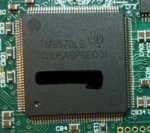These bikes are actually pretty simple in regards to the number and type of electronic components within all our "black boxes". Not that the circuity and logic is simple, quite the contrary, it's very advanced. However, the fact is that advances in microchip technology has lead to huge reductions in component count and ultimately the physical complexity of the boards inside our controller modules. Theoretically, this should make troubleshooting easier as there's simply fewer parts to fail and/or test. Alta was also quite thoughtful in regards to embedding quite a number of test points within their PCB layouts which should also make troubleshooting easier.
Having said that, it still requires a good understanding of the system architecture and operation to develop the proper test procedures and expected values/signals. This must be done without even the most basic schematics so it's an engineering challenge to say the least.
On the flip side, all this component consolidation and micronization has issues as well. Certain discrete components have become so small they're difficult to see (even with magnification) yet alone try to identify and perform some kind of repair to. Many of the midsized electronic components like voltage regulators, relays, CAN transceivers/controllers, etc are industry standard but there are some specialty chips and larger MCU chips that although not particularly expensive have limited commercial demand making them subject to future availability issues. I've already discovered that central MCU within the inverter module is no longer in production. On the other hand, the main MCU within the ACM is alive and well, cost . . about $20 bucks.
Having said that, it still requires a good understanding of the system architecture and operation to develop the proper test procedures and expected values/signals. This must be done without even the most basic schematics so it's an engineering challenge to say the least.
On the flip side, all this component consolidation and micronization has issues as well. Certain discrete components have become so small they're difficult to see (even with magnification) yet alone try to identify and perform some kind of repair to. Many of the midsized electronic components like voltage regulators, relays, CAN transceivers/controllers, etc are industry standard but there are some specialty chips and larger MCU chips that although not particularly expensive have limited commercial demand making them subject to future availability issues. I've already discovered that central MCU within the inverter module is no longer in production. On the other hand, the main MCU within the ACM is alive and well, cost . . about $20 bucks.

